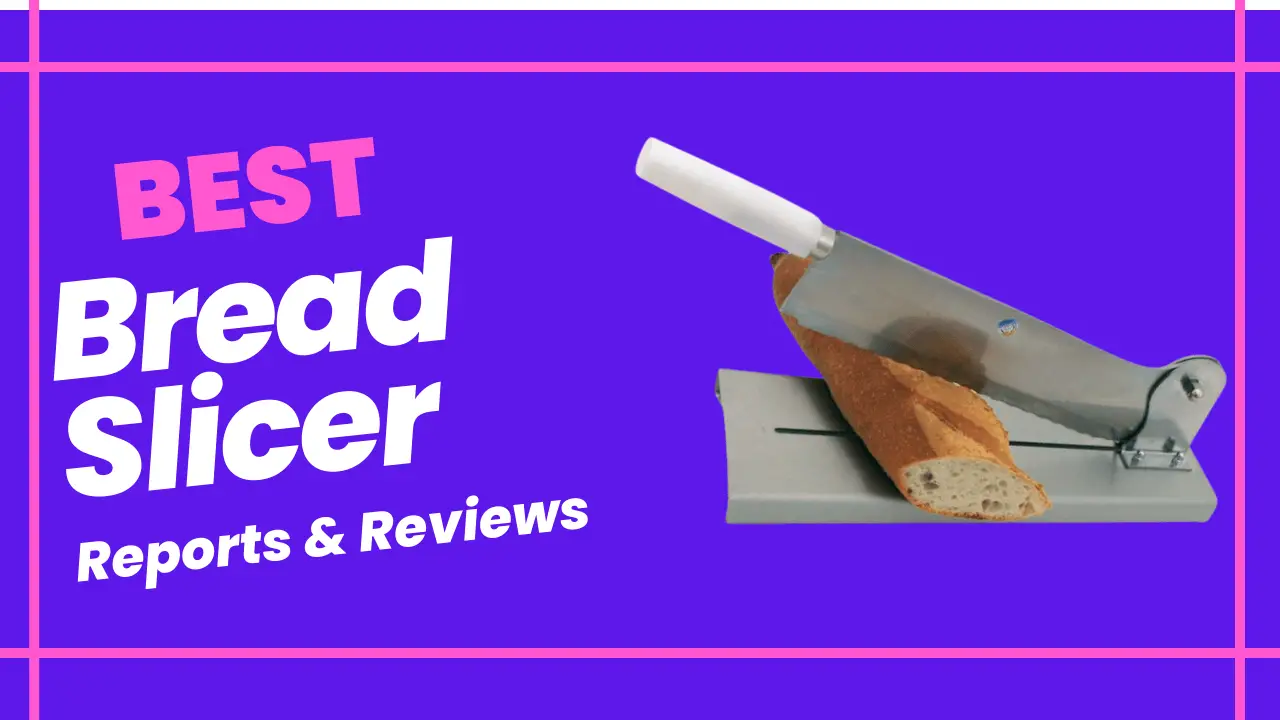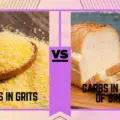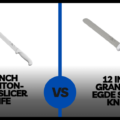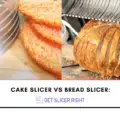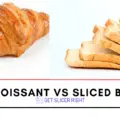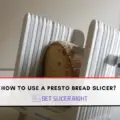Slicing bread is an essential skill in the kitchen. Different types of bread require different slicing techniques to achieve the perfect slice. From standard to diagonal, thick to thin, there are many ways to slice bread like a pro.
What Is Bread Slicing?
Bread slicing is the process of cutting a loaf of bread into individual, uniform slices using a knife or a specialized bread-slicing machine, making the bread easier for sandwiches or toast.
How Does Bread Slicing Work?
Bread-slicing machines work by holding the loaf of bread in place, moving a serrated blade through it, and cutting it into even slices. The thickness of the slices can be adjusted by changing the blade’s position or using different blades with varying thicknesses.
Different Types Of Bread Slicing
Standard Slicing
Standard slicing is the most common type of bread slicing. It involves cutting the bread into even slices of about 1 cm thickness. This method is suitable for most types of bread, including white, whole wheat, and multigrain. Standard slicing is perfect for making sandwiches or toast.
Thin Slicing
Thin slicing is similar to standard slicing, but the slices are thinner, usually about 0.5 cm thick. This method is commonly used for delicate types of bread, such as French bread or baguettes. Thin slices are also ideal for making appetizers such as bruschetta.
Thick Slicing
Thick slicing involves cutting the bread into slices that are about 2-3 cm thick. This method is best for dense types of bread, such as sourdough or rye bread. Thick slices are ideal for making toast or sandwiches with lots of filling.
Diagonal Slicing
Diagonal slicing is a decorative type of bread slicing that involves cutting the bread at an angle. This method is mainly used for bread as a side dish or appetizer. Diagonal slicing gives the bread a more elegant look and makes it easier to dip into sauces.
Crusty Slicing
Crusty slicing is a type of slicing that is used for bread with a hard crust, such as sourdough or artisan bread. It involves cutting the bread vertically and then tearing the slices apart. This method suits chewy bread and dipping it into olive oil or soups.
Pullman Slicing
Pullman slicing is a type of slicing that involves using a special bread pan. The pan has a lid that keeps the bread from rising too high, resulting in a loaf of bread with a uniform shape. Pullman slicing produces bread that is perfect for making sandwiches or toast.
Waffle Slicing
Waffle slicing is a unique type of bread slicing that involves cutting the bread into a waffle-like pattern. This method is mainly used for bread served as a dessert. Waffle slices are great for making French toast or bread pudding.
Cinnamon Roll Slicing
Cinnamon roll slicing is a type of slicing that is mainly used for sweet bread, such as cinnamon rolls or babka. This method involves cutting the bread into spirals, resulting in perfectly shaped slices that are great for baking.
Stuffed Slicing
Stuffed slicing is a type of slicing that involves cutting the bread in such a way that it can be filled with various ingredients. This method is commonly used for bread as an appetizer or main course. Stuffed slices are great for making sandwiches or bruschetta.
Spiral Slicing
Spiral slicing is a type of slicing that involves cutting the bread into a spiral pattern. This method mainly uses sweet bread such as cinnamon rolls or babka. Spiral slices are perfect for making cakes or pastries.
How To Automate Soft Bread Slicing?
Soft bread can be difficult to slice evenly, and it can be challenging to achieve consistent results when slicing by hand. However, there are a few ways to automate the soft bread slicing process, making it faster, more efficient, and more consistent. Here are a few methods you can use:
Bread Slicing Machine
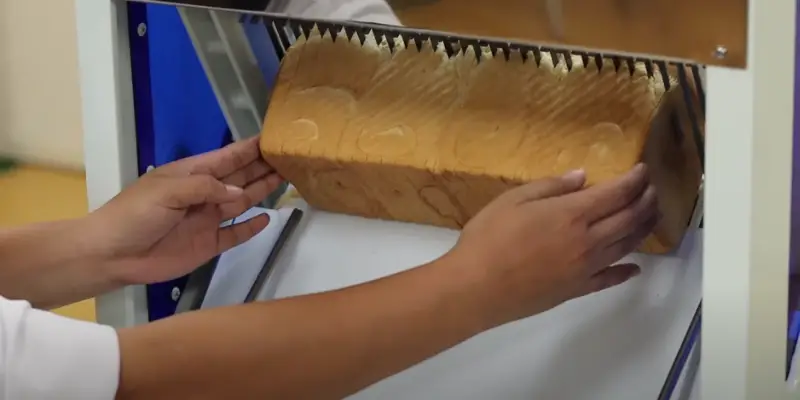
A bread-slicing machine is a device specifically designed to slice bread automatically. These machines come in various sizes and designs, from small electric models for home use to large commercial machines for bakeries. They typically use a serrated blade to slice through the bread, producing consistent slices of the desired thickness. The bread is usually fed into the machine using a conveyor belt or other mechanism.
Electric Knife
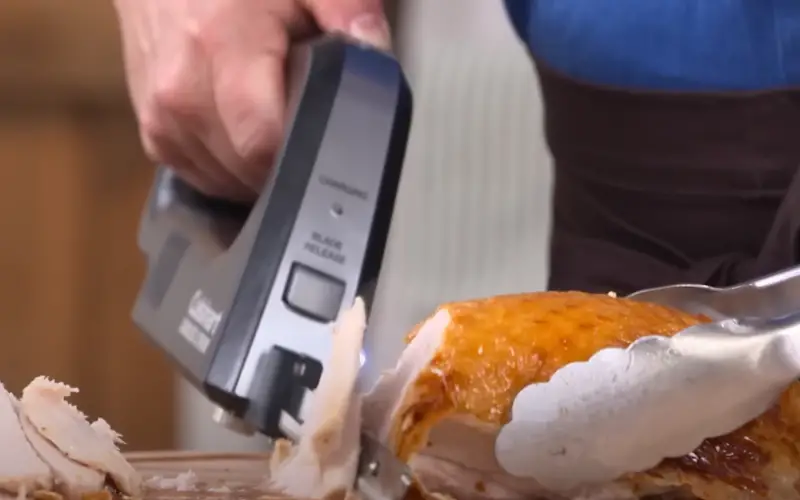
An electric knife is a kitchen appliance that can automatically slice soft bread. These knives feature a serrated blade that moves back and forth rapidly, allowing quick and easy slicing. They are particularly useful for slicing soft bread that might be difficult to cut evenly with a regular knife. Electric knives can be used for a variety of other tasks as well, such as carving meat or slicing vegetables.
Mandoline Slicer
A mandoline slicer is a kitchen tool that can slice soft bread automatically. It consists of a flat platform with an adjustable blade that can be set to the desired thickness. The bread is placed on the platform, and then the blade is pushed down through the bread, slicing it evenly. Mandoline slicers can be used for a variety of other tasks as well, such as slicing vegetables or cheese.
Food Processor
A food processor can also be used to slice soft bread automatically. Attach the slicing blade to the food processor and feed the bread into the machine using the food chute. The food processor will then slice the bread automatically, producing even slices of the desired thickness. Food processors can be used for a variety of other tasks as well, such as chopping vegetables or making dough.
Why Are Bread Slicers A Must-Have Restaurant Equipment For Artisan Bakers?
Bread slicers are a must-have restaurant equipment for artisan bakers for several reasons.
- They save time and increase efficiency in the kitchen by automating the bread-slicing process. This allows bakers to focus on other tasks and improve their overall productivity.
- Bread slicers ensure consistent slice thickness, which is important for maintaining the quality of the bread and creating a consistent customer experience.
- Bread slicers help to reduce waste by ensuring that each loaf is sliced evenly and efficiently, reducing the amount of leftover bread that needs to be discarded.
How Can A Bread Slicer Make Your Business Grow Faster?
Investing in a bread slicer can help your business grow faster
- It can increase efficiency in the kitchen, allowing you to produce more bread in less time. This can help you to meet demand and serve more customers.
- A bread slicer can improve the quality of your bread by ensuring consistent slice thickness, which can lead to happier customers and repeat business.
- A bread slicer can help reduce waste, saving money over time and improving your bottom line.
Which Bread Slicer Machine Is Right For You: A Freestanding Or Countertop Machine?
When choosing a bread slicer machine, you must consider several factors to determine which type is right for you:
- Freestanding machines are larger and more expensive, but they can handle larger volumes of bread and are generally more durable.
- Countertop machines, on the other hand, are smaller and less expensive, making them a good choice for smaller bakeries or kitchens with limited space. They are also more portable, which can benefit you if you move your equipment around frequently.
Choosing between a freestanding and countertop machine will ultimately depend on your specific needs and budget.
FAQs
What are the common problems with bread slicing?
Common problems with bread slicing include uneven slices, tearing of the bread, and difficulty slicing through crusty bread. To avoid these problems, using a sharp blade and letting the bread cool before slicing is important. Additionally, some breads are easier to slice than others, so choosing the right type of bread for slicing can also help.
How temperature affects bread slicing?
Temperature can also affect bread slicing. Warm bread is more difficult to slice, as it tends to tear or become squished by the blade. It is recommended to wait until the bread has cooled before slicing it.
What is the best way to slice bread for sandwiches?
Standard slicing is the best way to slice bread for sandwiches.
What is the best way to slice crusty bread?
Crusty slicing is the best way to slice crusty bread.
Can I use the same slicing technique for all types of bread?
No, different types of bread require different slicing techniques.
What is the best way to slice bread for appetizers?
Diagonal slicing is the best way to slice bread for appetizers.
What is the best way to slice bread for desserts?
Waffle slicing or cinnamon roll slicing are the best ways to slice bread for desserts.
Conclusion
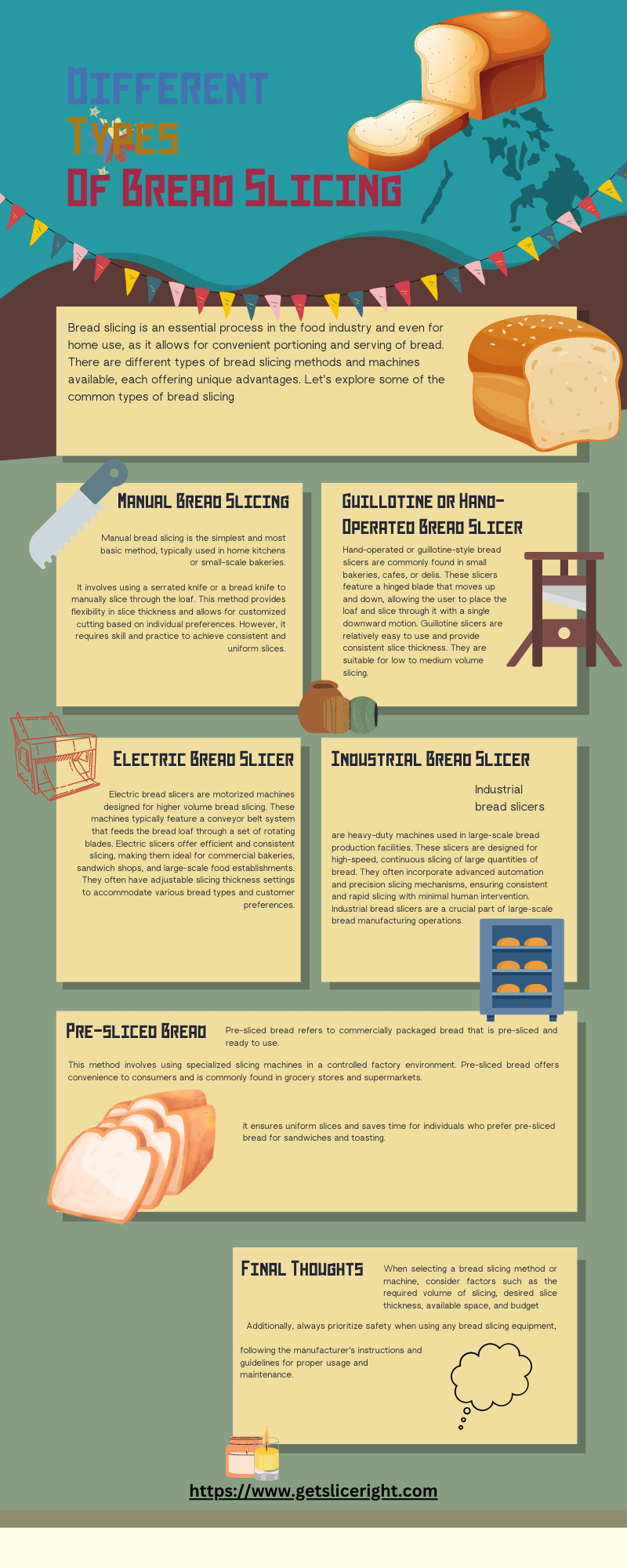
Bread slicing is an important skill to have in the kitchen. Whether you’re making sandwiches, toast, appetizers, or desserts, choosing the right slicing technique can make all the difference. From standard to diagonal, thick to thin, and even stuffed and spiral slicing, there are many ways to slice bread like a pro. With these techniques, you can slice bread perfectly every time.

Mario Batali is a renowned author, food enthusiast, and passionate chef who has dedicated his life to exploring the world of culinary arts. With a love for sharing his knowledge and experiences, Mario has become a prominent figure in the food blogging community, inspiring countless readers with his creativity and expertise.
In addition to his culinary prowess, Mario Batali is also a talented writer with a flair for engaging storytelling. He launched his own food blog to share his recipes, cooking tips, and personal experiences in the kitchen. Over time, Mario’s blog gained a loyal following of food enthusiasts who appreciate his unique approach to cooking and his dedication to using only the finest ingredients.
Mario Batali’s passion for food and his commitment to sharing his knowledge with others have made him a true inspiration in the world of culinary arts. Through his blog, cookbooks, and public appearances, Mario continues to spread his love of food and the joy of cooking with his ever-growing fanbase.

